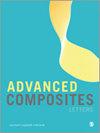纱线细度和纱层数对三维机织物面内剪切性能的影响
IF 2.1
4区 材料科学
Q3 MATERIALS SCIENCE, COMPOSITES
引用次数: 0
摘要
三维层间角互锁织物在复杂的外形上具有良好的变形性,在航空航天领域具有很大的应用潜力。本文主要研究了纱线细度和纱线层数对三维LLAIWF在偏压拉伸过程中面内剪切性能的影响。设计了两种改变三维LLAIWF厚度的方法:改变纱线细度和改变纱线层数。分析了LLAIWF在偏压拉伸试验中的变形机理。比较分析了两种方法对平面内剪切变形的影响。除了对实验曲线进行数据处理外,还对试验照片进行了数字图像相关分析,从中测量了不同区域剪切角下的剪切角。在偏压拉伸试验中观察到了织物的细观结构。通过对织物的裁剪,观察了纱线层数减少对织物细观结构的影响。结果表明,纱线细度和纱线层数对三维LLAIWF的面内剪切性能起着关键作用。另外,织物厚度的变化导致织物的变形是不对称的。在偏伸试验中,经纱细度的影响与纬纱细度的影响相似。减少织物的内部纱线会产生一个间隙,纱线会减少。这个间隙将影响织物的变形能力。本文章由计算机程序翻译,如有差异,请以英文原文为准。
The influence of yarn fineness and number of yarn layers on in-plane shear properties of 3-D woven fabric
The 3-D layer-to-layer angle-interlock woven fabric (LLAIWF) has good deformability on a complicated contour, which offers them a large application potential in the field of aerospace. This article mainly focuses on the influence of yarn fineness and number of yarn layers on in-plane shear properties of 3-D LLAIWF during bias extension. Two methods of varying the thickness of 3-D LLAIWF were designed: changing yarn fineness and changing the number of yarn layers. The deformation mechanism of LLAIWF in bias-extension test was analyzed. The effects of two methods on in-plane shear deformation were compared and analyzed. In addition to the data processing on the experimental curve, digital image correlation analysis was conducted on the test photographs, from which shear angles in different area shear angle were measured. The mesostructure of fabric during the bias-extension test was observed. The effect of decreasing yarn layers on the mesostructure of fabric was observed by cutting fabric. The results demonstrated that the yarn fineness and the number of yarn layers play a key role in the in-plane shear properties of 3-D LLAIWF. In addition, the changing of fabric thickness causes that the deformation is asymmetrical. The effect of warp yarn fineness is similar to that of weft yarn fineness during the bias-extension test. Reducing the internal yarns of the fabric created a gap, where the yarns were reduced. This gap will affect the deformability of the fabric.
求助全文
通过发布文献求助,成功后即可免费获取论文全文。
去求助
来源期刊

Advanced Composites Letters
工程技术-材料科学:复合
自引率
0.00%
发文量
0
审稿时长
4.2 months
期刊介绍:
Advanced Composites Letters is a peer reviewed, open access journal publishing research which focuses on the field of science and engineering of advanced composite materials or structures.
 求助内容:
求助内容: 应助结果提醒方式:
应助结果提醒方式:


